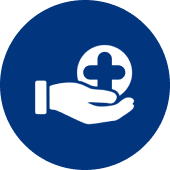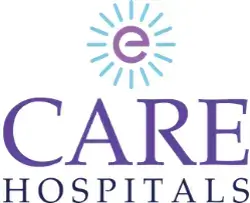-
Doctors
-
Specialities & Treatments
Centre of Excellence
Specialties
Treatments and Procedures
Hospitals & Directions HyderabadCARE Hospitals, Banjara Hills CARE Outpatient Centre, Banjara Hills CARE Hospitals, HITEC City CARE Hospitals, Nampally Gurunanak CARE Hospitals, Musheerabad CARE Hospitals Outpatient Centre, HITEC City CARE Hospitals, Malakpet
HyderabadCARE Hospitals, Banjara Hills CARE Outpatient Centre, Banjara Hills CARE Hospitals, HITEC City CARE Hospitals, Nampally Gurunanak CARE Hospitals, Musheerabad CARE Hospitals Outpatient Centre, HITEC City CARE Hospitals, Malakpet Raipur
Raipur
 Bhubaneswar
Bhubaneswar Visakhapatnam
Visakhapatnam
 Nagpur
Nagpur
 Indore
Indore
 Chh. Sambhajinagar
Chh. SambhajinagarClinics & Medical Centers
Book an AppointmentContact Us
Online Lab Reports
Book an Appointment
Consult Super-Specialist Doctors at CARE Hospitals

Bentall Procedure
Bentall Procedure
Bentall Surgery Procedure in Hyderabad, India
An aorta is a large artery originating from the heart and branching out into smaller veins to supply oxygenated blood to all parts of the body. It consists of the ascending aorta (which passes through the heart), the aortic arch (which passes over the heart), the descending thoracic aorta (which passes down the chest region), and the abdominal aorta (which begins at the diaphragm).
An aortic defect can be corrected with the Bentall procedure. Aortic root replacement (replacement of the root of the aorta) and valve replacement (three flaps that ensure one-way blood flow from the heart to the aorta), as well as coronary artery revision (reimplantation of the coronary arteries that branch out from the ascending aorta), are required. It is called the button Bentall surgery - the current and most common surgery.
Indications
-
Aortic regurgitation- occurs when the aortic valve does not close properly.
-
Marfan’s syndrome- a condition in which the wall of the aorta weakens.
-
Aortic aneurysm- enlargement of the aorta.
-
Aortic dissection- tearing of the inner layer of the aorta.
Bentall Procedure
-
The surgery will be performed under general anesthesia to prevent pain.
-
During surgery, vital signs such as blood pressure and oxygen levels will be monitored.
-
The surgeon will make an incision on the middle of the chest and attach a cardiopulmonary bypass machine, which circulates oxygenated blood throughout the body.
-
The core body temperature will be lowered with a cooling technique.
-
Due to a lack of oxygen, this technique pauses the body’s internal processes so that heart surgery can be performed and reduces the risk of heart and brain damage.
-
A suitable artificial valve will be attached to the heart’s aortic root and the coronary arteries reconnected.
-
The incisions will be closed and bandaged with sutures after the necessary corrections have been made.
The Bentall procedure is a complex surgical intervention performed to address aortic aneurysms and related issues with the aortic valve. Here's an overview of what happens before, during, and after the Bentall procedure:
Before the Surgery:
- Diagnosis and Evaluation: The need for a Bentall procedure is determined through diagnostic tests, such as imaging studies (CT scans, echocardiograms) and a thorough assessment of the patient's medical history.
- Preoperative Assessment: The patient undergoes a comprehensive preoperative assessment, which includes evaluating cardiovascular health, identifying any coexisting medical conditions, and ensuring that the patient is a suitable candidate for surgery.
- Treatment Planning: Based on the severity and location of the aortic aneurysm, the healthcare team discusses treatment options with the patient. If the Bentall procedure is deemed necessary, the type and size of the prosthetic valve and graft material are determined.
- Patient Education: The patient receives information about the procedure, potential risks and benefits, and the expected recovery process. Informed consent is obtained.
During the Surgery:
- Anesthesia: The patient is placed under general anesthesia to ensure unconsciousness and pain control during the surgical procedure.
- Incision: A surgical incision is made, usually in the chest, to access the heart and aorta.
- Aortic Valve Removal: The damaged aortic valve is removed. This step is necessary if the aortic valve is diseased or dysfunctional.
- Ascending Aorta Replacement: The weakened section of the ascending aorta is excised and replaced with a synthetic graft.
- Aortic Valve Replacement: A prosthetic valve is attached to the graft to replace the removed aortic valve. This valve can be mechanical or biological.
- Coronary Artery Reimplantation: If required, the coronary arteries are reimplanted into the graft to ensure proper blood flow to the heart muscle.
After the Surgery:
- Postoperative Monitoring: The patient is transferred to the intensive care unit (ICU) for close postoperative monitoring. Vital signs, heart function, and overall recovery are closely observed.
- Pain Management: Pain management is an essential aspect of postoperative care. Medications and techniques are used to control pain and discomfort.
- Rehabilitation and Recovery: Physical rehabilitation may be initiated to promote mobility and overall recovery. The patient is gradually weaned off mechanical ventilation if used during surgery.
- Hospital Stay: The length of the hospital stay varies, but patients typically remain in the hospital for several days to monitor recovery and ensure stability.
- Follow-up Care: Follow-up appointments are scheduled to monitor the patient's progress, assess the function of the prosthetic valve, and address any concerns or complications.
Diagnosis
We use various methods to diagnose and evaluate an aortic issue that may require a surgeon to perform a Bentall procedure to correct it. Of course, the attending surgeon may perform more than one test. These tests may include:
-
X-rays: This technique uses light with a shorter wavelength than visible light to take images of internal organs, which can be used to diagnose problems.
-
Echocardiogram: Used to detect any abnormalities in the heart.
-
CT scan: A technique for obtaining a detailed image of the inside of the body.
-
Ultrasound: Here, high-frequency sound waves are used to obtain an internal view of the human body.
The physician may decide whether or not to perform the Bentall procedure, including Aortic Valve Replacement in Hyderabad, based on the results of the different examinations.
Potential Risks
Similar to other open-heart surgeries, the Bentall procedure carries inherent risks, and it is a substantial intervention with the unfortunate possibility of not being survivable for everyone. According to a study, the risk of mortality within the first 30 days of hospitalization is estimated to be approximately 5%.
Potential complications associated with the procedure include:
- Irregular heart rhythm
- Reduced cardiac output
- Heart attack
- Stroke
- Infection (such as sepsis, pneumonia, or surgical wound infection)
- Internal bleeding, which may require surgical correction
- Sudden kidney failure, which could be temporary or permanent
- Prolonged dependency on mechanical ventilation
- Development of a new aortic aneurysm or aorta dissection
The risk of experiencing certain complications may be higher for individuals with additional medical conditions, such as diabetes, or those with particularly severe existing heart conditions. Fortunately, advancements in surgical techniques have led to a reduction in the risks of some of these complications since the procedure was initially performed.
The recovery process
After aortic valve replacement in Hyderabad, you will be taken to a post-anesthesia care unit and hooked up to a machine that will monitor your vital signs. When you are discharged from the hospital, your doctor will give you instructions to follow, such as:
-
Gradually increase your activity level.
-
For the first 12 weeks after surgery, do not engage in any vigorous activity.
-
After your surgery, you should not lift heavy weights for a few weeks.
The following symptoms should be reported to your consulting doctor:
-
Chills
-
High fever
-
Drainage from the incision
-
Incisional redness
-
Increased incisional tenderness
The Bentall surgery procedure has several advantages:
-
Congenital heart defects can be reduced by this treatment.
-
Reduces the risk of recurrence of heart attacks.
-
Extends the life expectancy of an individual.
-
Congenital heart disease treatment.
Why do you have to choose CARE Hospitals?
-
We provide quality medical care and exceptional patient service to the highest standards of international and national health care.
-
The facility teams up with expert cardiologists and cardiac surgeons to provide accurate diagnosis and medical care on Bentall Procedure Cost.
-
Patients can receive safer, better, and more comprehensive medical care on account of the hospital’s high-tech infrastructure and modern medical facilities.
Frequently Asked Questions
Still Have a Question?

